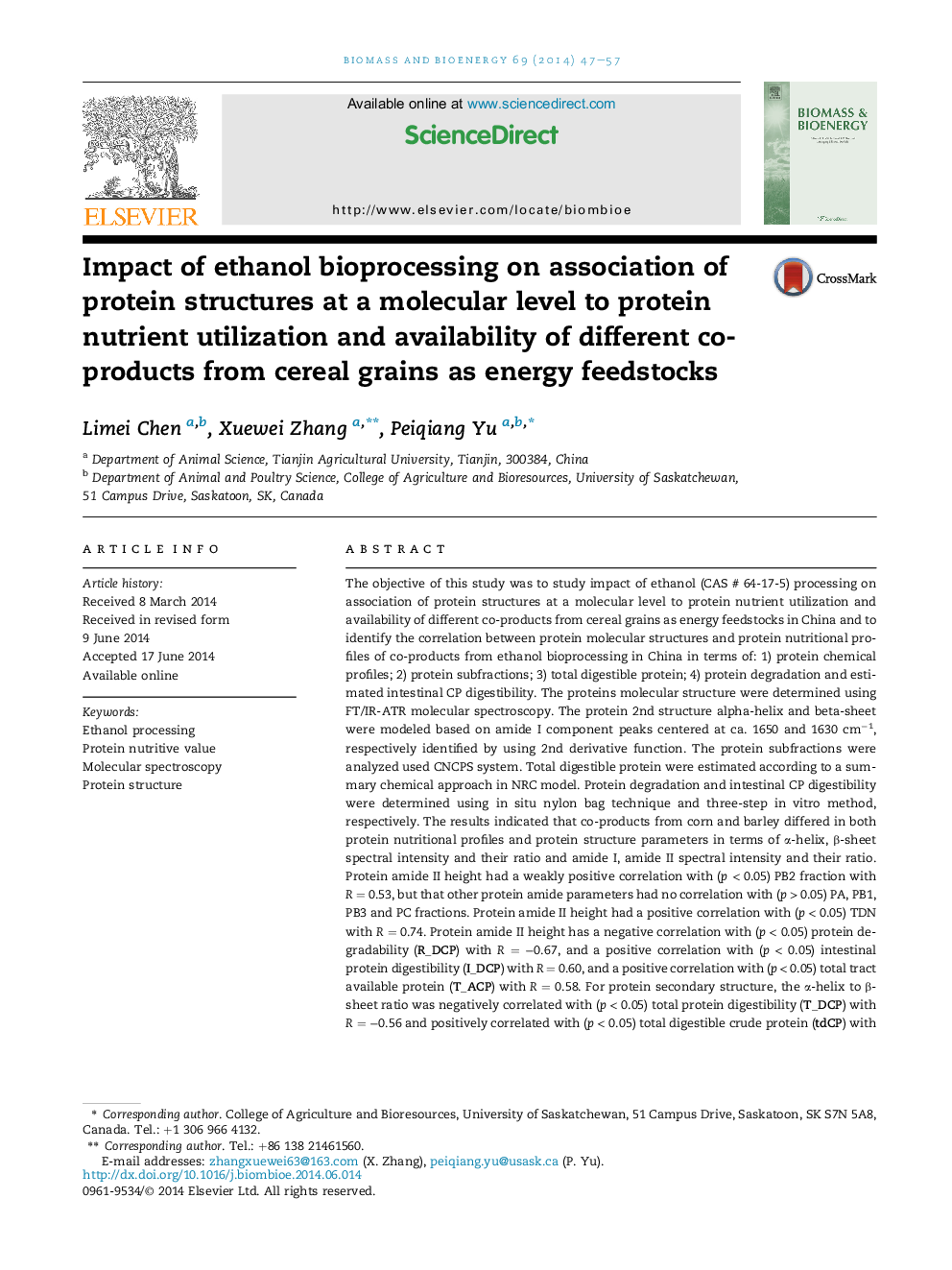| Article ID | Journal | Published Year | Pages | File Type |
|---|---|---|---|---|
| 7064288 | Biomass and Bioenergy | 2014 | 11 Pages |
Abstract
The objective of this study was to study impact of ethanol (CAS # 64-17-5) processing on association of protein structures at a molecular level to protein nutrient utilization and availability of different co-products from cereal grains as energy feedstocks in China and to identify the correlation between protein molecular structures and protein nutritional profiles of co-products from ethanol bioprocessing in China in terms of: 1) protein chemical profiles; 2) protein subfractions; 3) total digestible protein; 4) protein degradation and estimated intestinal CP digestibility. The proteins molecular structure were determined using FT/IR-ATR molecular spectroscopy. The protein 2nd structure alpha-helix and beta-sheet were modeled based on amide I component peaks centered at ca. 1650 and 1630 cmâ1, respectively identified by using 2nd derivative function. The protein subfractions were analyzed used CNCPS system. Total digestible protein were estimated according to a summary chemical approach in NRC model. Protein degradation and intestinal CP digestibility were determined using in situ nylon bag technique and three-step in vitro method, respectively. The results indicated that co-products from corn and barley differed in both protein nutritional profiles and protein structure parameters in terms of α-helix, β-sheet spectral intensity and their ratio and amide I, amide II spectral intensity and their ratio. Protein amide II height had a weakly positive correlation with (p < 0.05) PB2 fraction with R = 0.53, but that other protein amide parameters had no correlation with (p > 0.05) PA, PB1, PB3 and PC fractions. Protein amide II height had a positive correlation with (p < 0.05) TDN with R = 0.74. Protein amide II height has a negative correlation with (p < 0.05) protein degradability (R_DCP) with R = â0.67, and a positive correlation with (p < 0.05) intestinal protein digestibility (I_DCP) with R = 0.60, and a positive correlation with (p < 0.05) total tract available protein (T_ACP) with R = 0.58. For protein secondary structure, the α-helix to β-sheet ratio was negatively correlated with (p < 0.05) total protein digestibility (T_DCP) with R = â0.56 and positively correlated with (p < 0.05) total digestible crude protein (tdCP) with R = 0.55. In conclusion, the relationship between mid-IR spectroscopic data and nutritional profiles and digestibility parameters illustrated that the co-products intrinsic structures are closely related to nutritive quality, nutrient utilization and digestive behavior.
Related Topics
Physical Sciences and Engineering
Chemical Engineering
Process Chemistry and Technology
Authors
Limei Chen, Xuewei Zhang, Peiqiang Yu,
